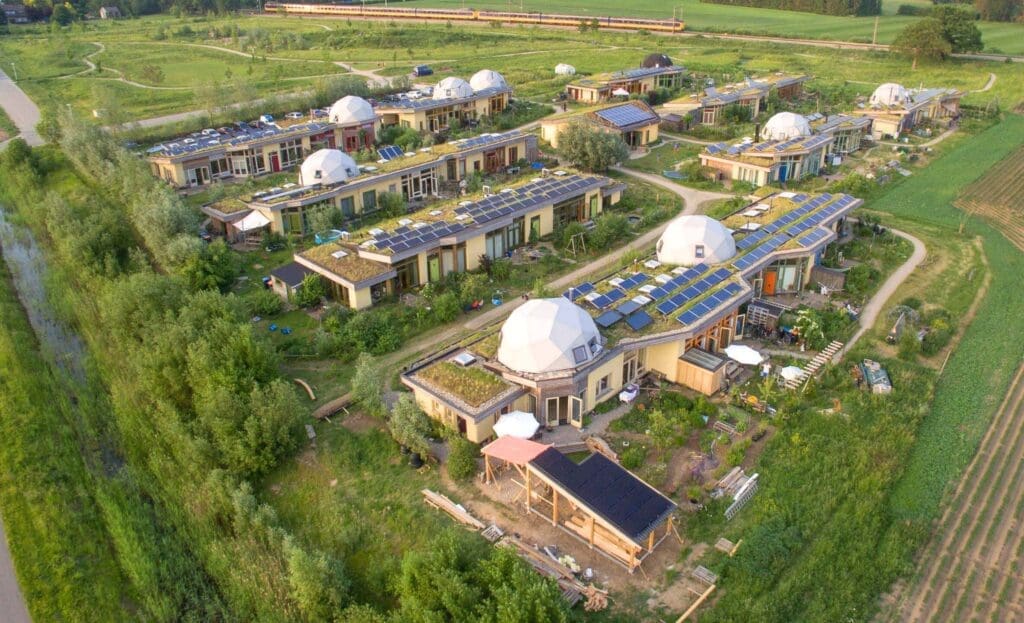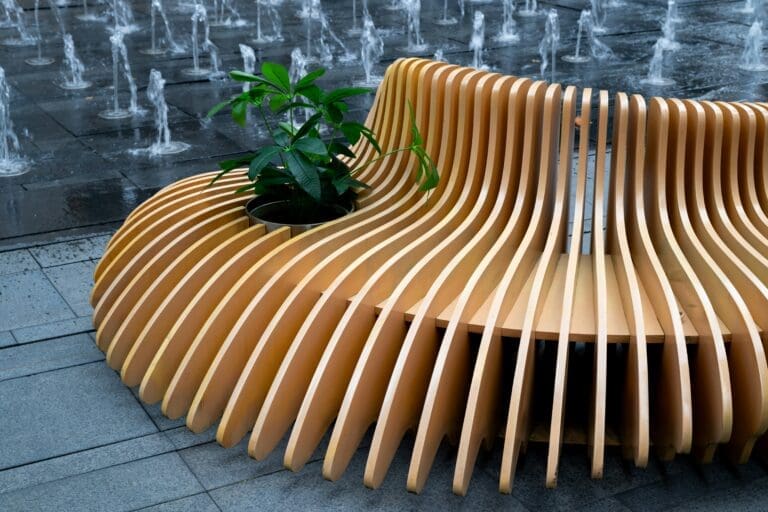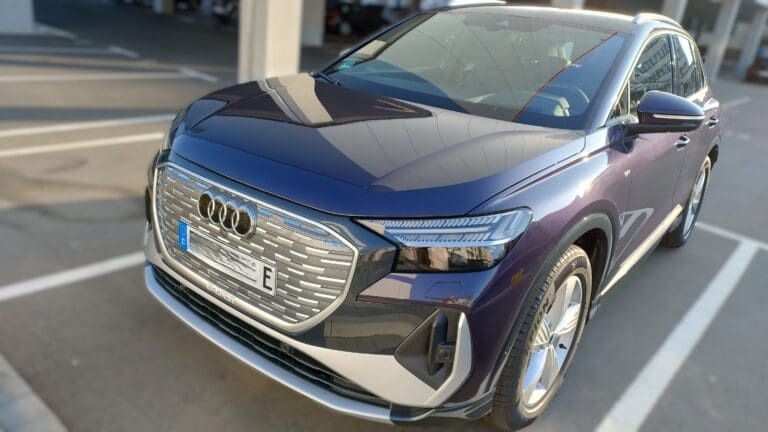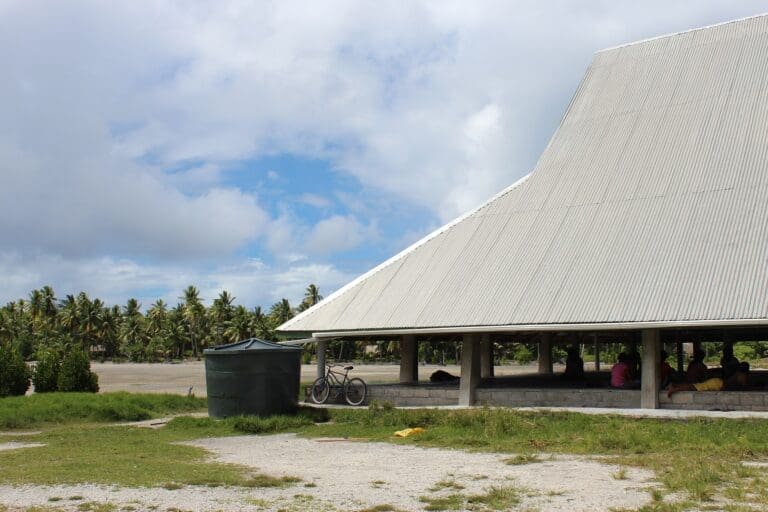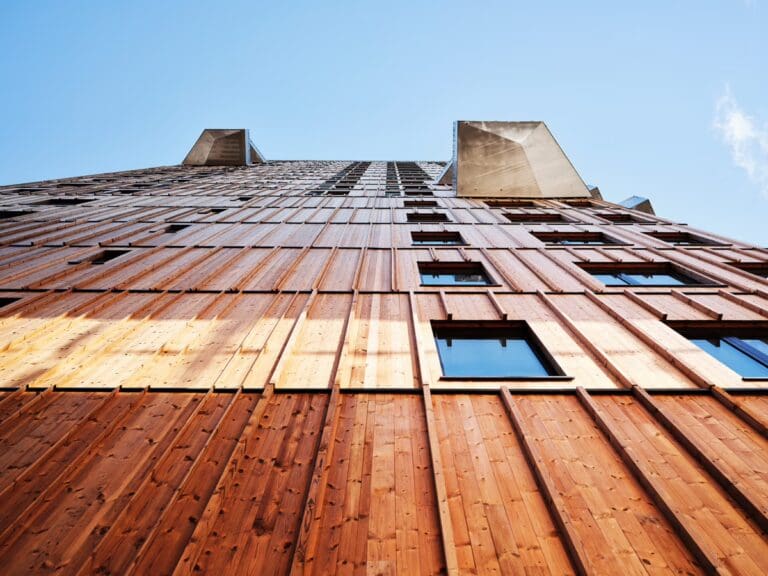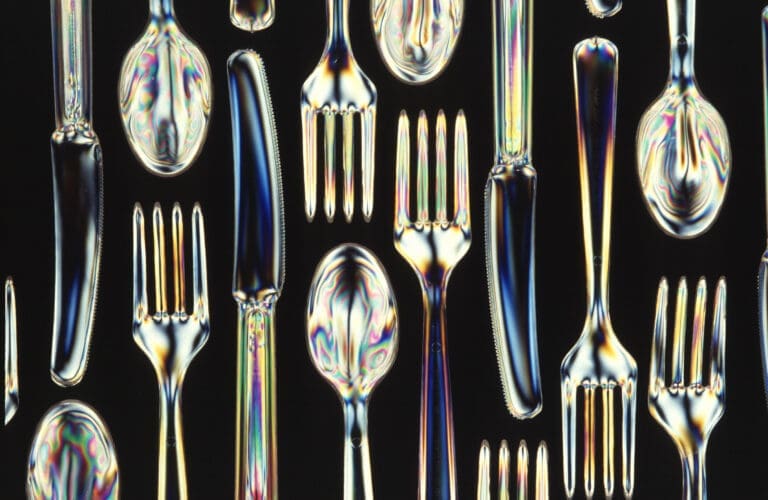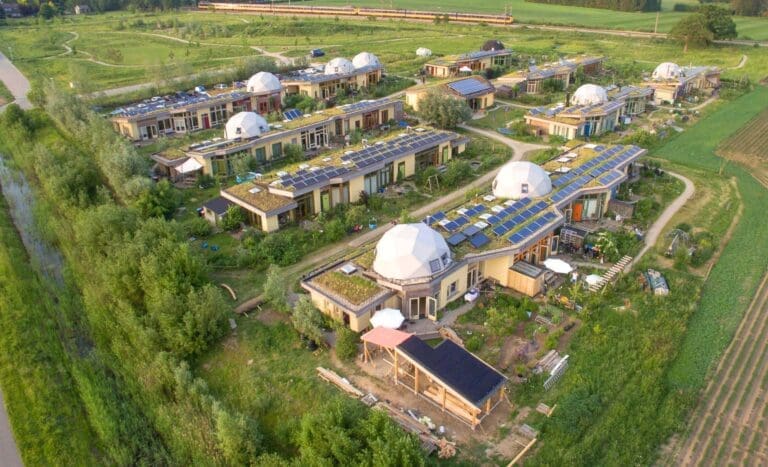Located in the Dutch province Overijssel, Aardehuizen is one of the most well-known eco-villages in Europe. The name translates as “Earth Houses,” which reflects both the physical buildings and the philosophy behind the project. An Aardehuis is a home designed to provide its owners with the healthiest possible environment by using natural materials and maximizing natural energy sources.
Although Aardehuizen is a small settlement (spanning 17,000 sqm) rather than a city, we deemed it worthwhile to include it in the City Projects section because of its strong Solarpunk connections: the harmony of technology and ecology, community-based governance, and its role as a living experiment in building a different kind of future.
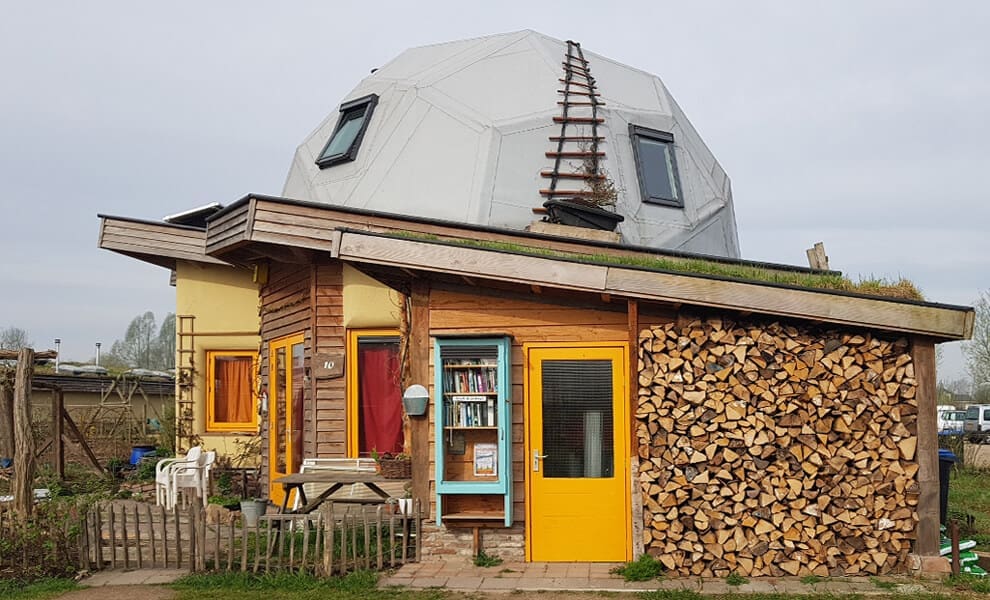
Origins and Vision
The roots of Aardehuizen lie in the early 2000s, when a group of Dutch pioneers began searching for alternatives to conventional housing models.[1] They wanted to reduce reliance on fossil fuels, build with locally available materials, and live in a way that minimized ecological impact. Inspired by the Earthship movement, they envisioned Earth Houses built not only from recycled but also natural materials, capable of generating much of their own energy, capturing and purifying water, and recycling waste.
After years of planning and negotiations with local authorities, the project broke ground in late 2011. The community faced significant challenges, particularly with building regulations that had not anticipated such unconventional construction. Nevertheless, over a 4½-year period they built the village with the help of about 40 residents and 1,500 volunteers from 27 countries. The total construction cost was approximately €5 million.[2]
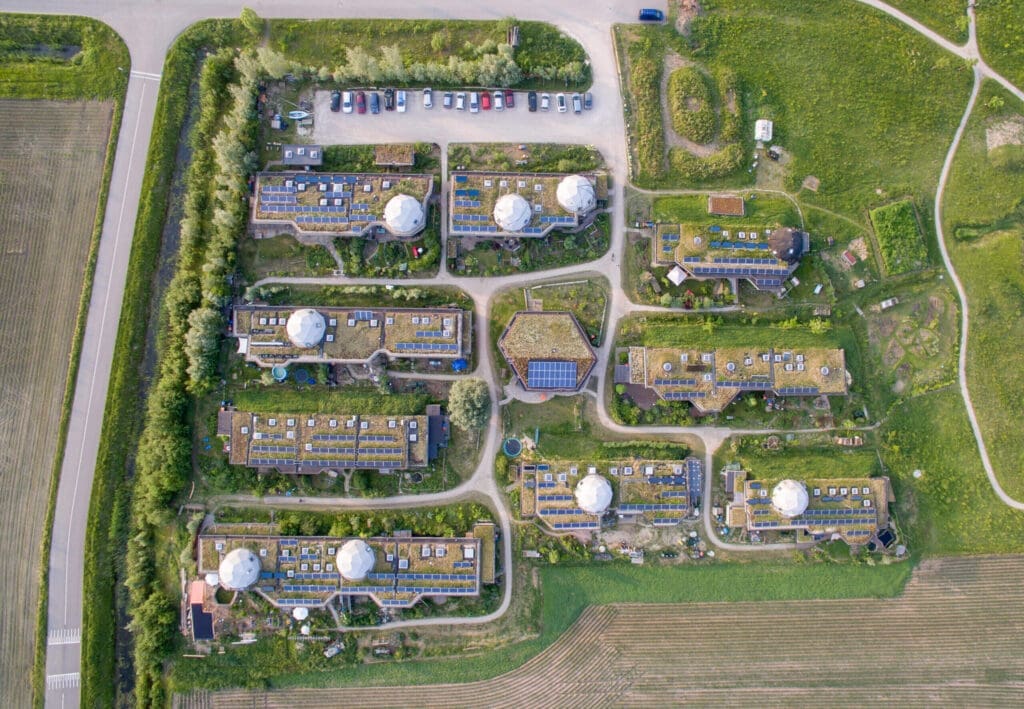
Layout and Building Techniques
The eco-village consists of 23 homes plus a community center known as the Middenhuis. Together they accommodate roughly 70 residents, mostly families.[1]
The houses are built in several rows, with access paths connecting them like tree branches. Twelve homes use thick walls made of car tires filled with compacted earth, while the remaining eleven houses are constructed from straw bales with timber frames. These thick walls create thermal mass, stabilizing indoor temperatures.[3]
Each building faces south, with 9° sloping roofs and large glazed facades that maximize solar gain in winter and minimize overheating in summer. Roofs are covered in vegetation for insulation and rainwater collection, while the north side is built partly into the ground, enhancing stability and reducing energy demand. The energy performance coefficient of the homes is zero or nearly zero, meaning little additional energy (e.g., from wood stoves or heat pumps) is required for heating.[3]
Renewables
One of Aardehuizen’s key achievements is its renewable energy system. Across the 23 homes and the community center, residents installed 274 photovoltaic panels, generating around 63,300 kWh annually. This production makes the households more or less energy neutral, as surplus electricity on sunny days is fed into the national grid, while on darker days electricity can also be drawn from it if needed.
Water and Waste Systems
The roofs of Aardehuizen collect rainwater, but the main source of drinking water is groundwater pumped and purified on site, with monthly quality checks. Greywater from sinks and showers flows into reed-bed helophyte filters, where it is naturally cleaned before being released back into the environment as surface water.[3]
Most households use composting toilets, saving thousands of liters of drinking water per year by avoiding flushing. Instead of creating sewage, the composting process recycles nutrients into fertilizer for gardens. This system not only reduces water use but also prevents “black water” pollution, aligning with circular economy principles.[3]
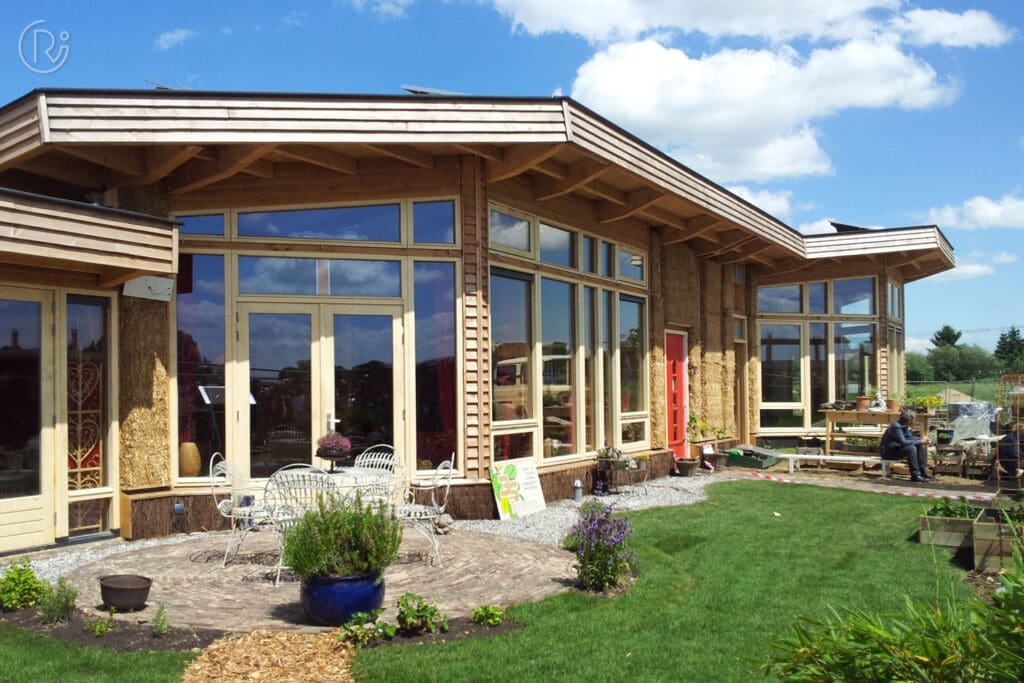
The Community and Sociocracy
Sustainability in Aardehuizen extends beyond physical infrastructure to the way the residents organize themselves. The eco-village is in fact managed cooperatively.
Decision-making follows the principles of sociocracy, a governance system emphasizing equality, consent, and distributed authority. Residents are organized into committees that take responsibility for areas such as gardening, finances, or education.[4]
Community life includes shared meals, childcare support, and maintenance of communal gardens. For many, this social dimension is just as important as the ecological design. Living in Aardehuizen requires compromise, patience, and open communication, but it also offers the support of neighbors who share values and resources.
Education and Influence
Since its completion in 2015, Aardehuizen has attracted widespread attention. Schools, universities, and sustainability enthusiasts frequently visit to learn about its building techniques, renewable energy systems, and cooperative governance. Workshops and guided tours make it a living classroom for sustainable living.
Its impact extends beyond the local scale: the project has inspired other eco-villages and alternative housing experiments internationally. By proving that such an initiative is possible even within the tight regulatory framework of a densely populated country, Aardehuizen has opened doors for further innovation.
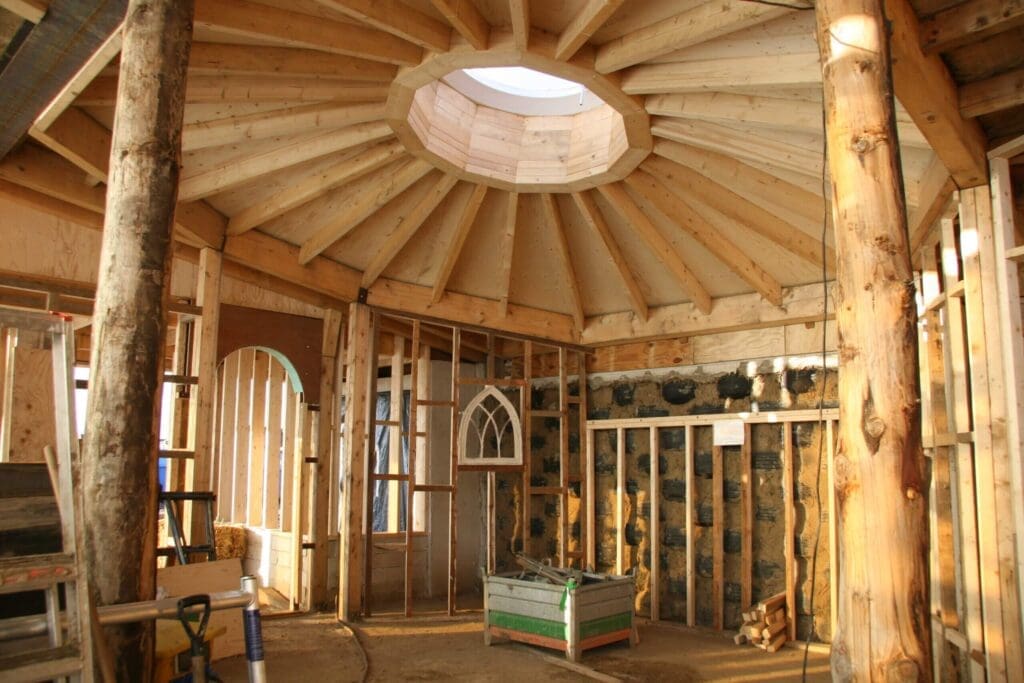
Challenges
Despite its successes, life in Aardehuizen is not without challenges. Building with unconventional methods required years of negotiation with authorities, and even today, residents must ensure that their systems meet safety and environmental standards. Improvements on self-sufficiency and ongoing maintenance of the water and waste systems remains a work in progress.
Socially, living in such close cooperation requires strong communication skills. While sociocracy helps distribute power fairly, it also requires time and effort to make collective decisions. Not everyone is suited to such a lifestyle, and conflicts inevitably arise.
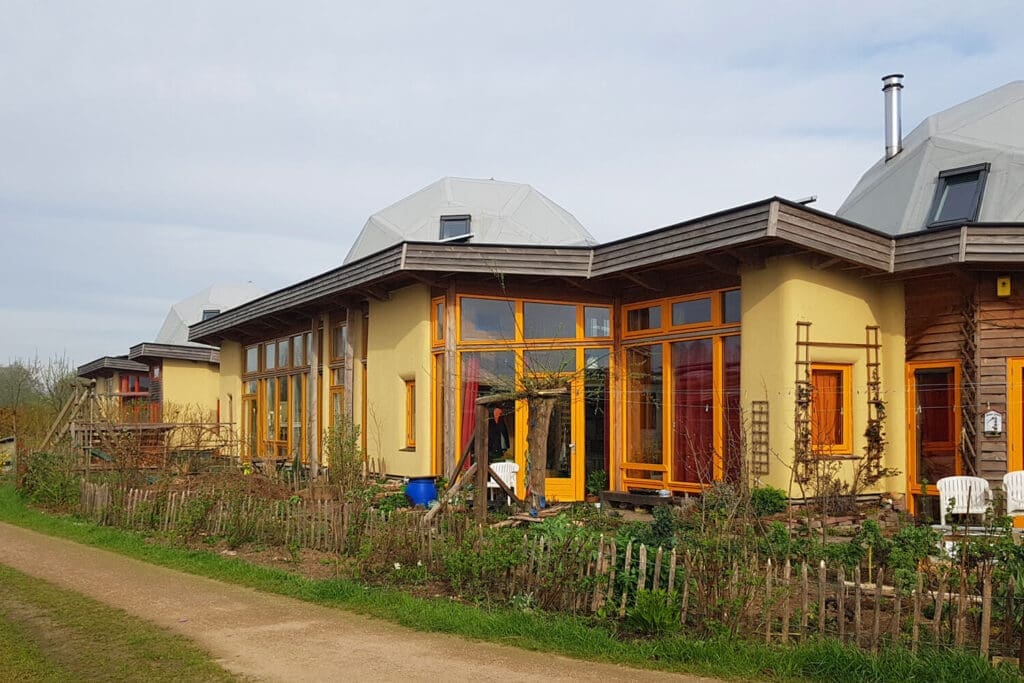
A Solarpunk Model
Aardehuizen is more than just a cluster of unusual houses in the Dutch countryside. It is a working example of how ecological design, renewable energy, and cooperative living can be integrated into daily life. Its 23 homes, the community center, 274 solar panels, composting toilets, and reed-bed water systems provide measurable evidence that sustainable living is not only possible but practical. The social dimension—70 people living by shared values and sociocratic principles—demonstrates that resilience also depends on human relationships.
Solarpunk envisions a future where technology harmonizes with nature, where cities are green and democratic, and where communities thrive in balance with the planet. Aardehuizen embodies this vision on a small scale: green roofs, renewable energy, communal gardens, and governance rooted in equality. It shows that Solarpunk is not just an aesthetic but a lived reality that can be built here and now!
Looking ahead, the lessons of Aardehuizen can inform broader urban design, energy policy, and social innovation. If replicated and scaled, eco-villages like this could form part of a larger transition toward a post-carbon society. They remind us that sustainability is not merely a technical challenge but a cultural project—one that requires imagination, cooperation, and courage.
All images courtesy of Michel Post | ORIO architecten
Sources:
[1] https://www.aardehuis.nl/index.php/en
[2] https://archive25.transitionnetwork.org/stories/aardehuis-earth-house-project-olst-netherlands
[3] https://www.aardehuis.nl/index.php/en/earthships/the-earthship-concept
[4] https://www.urbanitarian.com/masterplans_post?id=603

